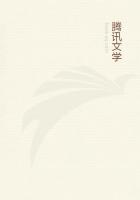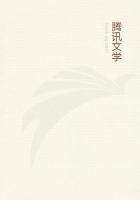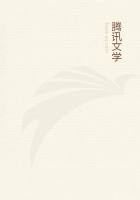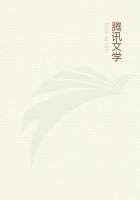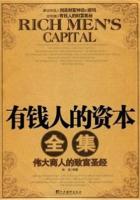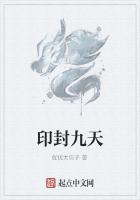When the time-gun boomed from Edinburgh Castle, Bobby gave a startled yelp.He was only a little country dog--the very youngest and smallest and shaggiest of Skye terriers-bred on a heathery slope of the Pentland hills, where the loudest sound was the bark of a collie or the tinkle of a sheep-bell.That morning he had come to the weekly market with Auld Jock, a farm laborer, and the Grassmarket of the Scottish capital lay in the narrow valley at the southern base of Castle Crag.Two hundred feet above it the time-gun was mounted in the half-moon battery on an overhanging, crescent-shaped ledge of rock.In any part of the city the report of the one-o'clock gun was sufficiently alarming, but in the Grassmarket it was an earth-rending explosion directly overhead.It needed to be heard but once there to be registered on even a little dog's brain.Bobby had heard it many times, and he never failed to yelp a sharp protest at the outrage to his ears; but, as the gunshot was always followed by a certain happy event, it started in his active little mind a train of pleasant associations.
In Bobby's day of youth, and that was in 1858, when Queen Victoria was a happy wife and mother, with all her bairns about her knees in Windsor or Balmoral, the Grassmarket of Edinburgh was still a bit of the Middle Ages, as picturesquely decaying and Gothic as German Nuremberg.Beside the classic corn exchange, it had no modern buildings.North and south, along its greatest length, the sunken quadrangle was faced by tall, old, timber-fronted houses of stone, plastered like swallows' nests to the rocky slopes behind them.
Across the eastern end, where the valley suddenly narrowed to the ravine-like street of the Cowgate, the market was spanned by the lofty, crowded arches of George IV Bridge.This high-hung, viaduct thoroughfare, that carried a double line of buildings within its parapet, leaped the gorge, from the tall, old, Gothic rookeries on High Street ridge, just below the Castle esplanade.
It cleared the roofs of the tallest, oldest houses that swarmed up the steep banks from the Cowgate, and ran on, by easy descent, to the main gateway of Greyfriars kirkyard at the lower top of the southern rise.
Greyfriars' two kirks formed together, under one continuous roof, a long, low, buttressed building without tower or spire.The new kirk was of Queen Anne's day, but the old kirk was built before ever the Pilgrims set sail for America.It had been but one of several sacred buildings, set in a monastery garden that sloped pleasantly to the open valley of the Grassmarket, and looked up the Castle heights unhindered.In Bobby's day this garden had shrunk to a long, narrow, high-piled burying-ground, that extended from the rear of the line of buildings that fronted on the market, up the slope, across the hilltop, and to where the land began to fall away again, down the Burghmuir.From the Grassmarket, kirk and kirkyard lay hidden behind and above the crumbling grandeur of noble halls and mansions that had fallen to the grimiest tenements of Edinburgh's slums.From the end of the bridge approach there was a glimpse of massive walls, of pointed windows, and of monumental tombs through a double-leafed gate of wrought iron, that was alcoved and wedged in between the ancient guildhall of the candlemakers and a row of prosperous little shops in Greyfriars Place.
A rock-rimmed quarry pit, in the very heart of Old Edinburgh, the Grassmarket was a place of historic echoes.The yelp of a little dog there would scarce seem worthy of record.More in harmony with its stirring history was the report of the time-gun.At one o'clock every day, there was a puff of smoke high up in the blue or gray or squally sky, then a deafening crash and a back fire fusillade of echoes.The oldest frequenter of the market never got used to it.On Wednesday, as the shot broke across the babel of shrill bargaining, every man in the place jumped, and not one was quicker of recovery than wee Bobby.Instantly ashamed, as an intelligent little dog who knew the import of the gun should be, Bobby denied his alarm in a tiny pink yawn of boredom.Then he went briskly about his urgent business of finding Auld Jock.
The market was closed.In five minutes the great open space was as empty of living men as Greyfriars kirkyard on a week-day.
Drovers and hostlers disappeared at once into the cheap and noisy entertainment of the White Hart Inn that fronted the market and set its squalid back against Castle Rock.Farmers rapidly deserted it for the clean country.Dwellers in the tenements darted up wynds and blind closes, climbed twisting turnpike stairs to windy roosts under the gables, or they scuttled through noble doors into foul courts and hallways.Beggars and pickpockets swarmed under the arches of the bridge, to swell the evil smelling human river that flowed at the dark and slimy bottom of the Cowgate.
A chill November wind tore at the creaking iron cross of the Knights of St.John, on the highest gable of the Temple tenements, that turned its decaying back on the kirkyard of the Greyfriars.Low clouds were tangled and torn on the Castle battlements.A few horses stood about, munching oats from feed-boxes.Flocks of sparrows fluttered down from timbered galleries and rocky ledges to feast on scattered grain.Swallows wheeled in wide, descending spirals from mud villages under the cornices to catch flies.Rats scurried out of holes and gleaned in the deserted corn exchange.And 'round and 'round the empty market-place raced the frantic little terrier in search of Auld Jock.

